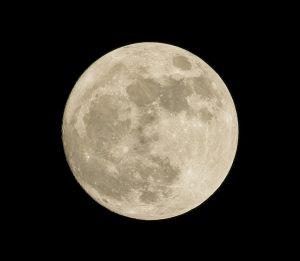 On Dec. 11, 1972, the Apollo capsule landed on the Moon, allowing astronauts to experience firsthand the Moon’s low gravity. Since then, however, neither NASA nor any other government or private organization has performed a manned moon mission. But that may soon change, as NASA is planning to perform a manned moon mission as early as 2024.
On Dec. 11, 1972, the Apollo capsule landed on the Moon, allowing astronauts to experience firsthand the Moon’s low gravity. Since then, however, neither NASA nor any other government or private organization has performed a manned moon mission. But that may soon change, as NASA is planning to perform a manned moon mission as early as 2024.
Known as the Artemis project, it’s a bold new project that includes the construction of a space station in the Moon’s orbit. The orbiting space station, known as the Gateway, will serve as a hub for astronauts going to and from the Moon. Why doesn’t NASA simply transport astronauts directly to the Moon rather than the Gateway and then the Moon? The Gateway is designed to make landing easier, as well as safer, by serving as a central hub.
Furthermore, NASA says it will purchase services from private aerospace companies, presumably SpaceX, to send astronauts to the Gateway. Once at the Gateway, the astronauts can then take a lander to the Moon on their own. For the Artemis project to work, though, NASA must form partnerships with companies in the private space sector.
In addition to the Gateway, NASA is developing several other key components for the Artemis project, including a crew capsule as well as a new rocket. The crew capsule, known as Orion, will support up to four astronauts, whereas the Space Launch System (SLS) is a heavy-lift rocket that’s part of NASA’s existing deep space exploration plans. Along with the Gateway, the Orion and the SLS are critical components of NASA’s Artemis project.
During an interview with TheVerge, NASA administrator Jim Bridenstine discussed the Artemis project. According to Bridenstine, NASA’s first goal for the project is to build the Gateway.
“We have to get the first elements of the Gateway launched: the Power and Propulsion Element and what we call the Utilization Module, which is a very small habitat. Each one of those pieces will be launched commercially, so there’s two launches.”
Additionally, Bridenstine, discussed the financial requirements of the Artemis project. While NASA is currently trying to secure $1.6 billion in funding from the White House, Bridenstine stresses that the total cost of the Artemis project is significantly lower than previous estimates of around $8 billion. It’s unknown exactly how much the project will cost, but Bridenstine says it will be lower than previous manned moon missions.
You can learn more about the Artemis project by checking out NASA’s official website here.



